 Your new post is loading...
 Your new post is loading...

|
Scooped by
Jeff Domansky
January 22, 2017 12:09 PM
|
Employee advocacy is taking corporate communications by stormr. Encouraging employees to be your organization's champions could be the perfect answer to journalists increasingly seeking real stories on social media. Companies like Cisco and Danske Bank are already experimenting with employee social-media takeovers. Don't sack your spokesperson, but it's definitely time to give your employees the forum they deserve....

|
Scooped by
Jeff Domansky
October 25, 2016 11:33 PM
|
Consider this statistic: employees are 2x as trusted as a CEO, senior executive, or activist consumer (Edelman). If that stat didn’t drive the importance of employee advocacy home for you, how about this: on average, brand messages are shared 24x more frequently when distributed by employees (MSL Group).
Employee advocacy is increasingly being seen as a key accompaniment when considering social media management solutions – and many established solution providers have adapted as such, whether as an add-on to their already existing services, or a tool that easily integrates across other CRM platforms.
The challenge for marketers, then, becomes choosing a solution that’s both scalable and that allows you to tie employee advocacy initiatives directly to ROI.
What investment can you make that maximizes your time while equipping your employees to be your most powerful brand advocates?
We’ve gathered 10 of the top employee advocacy tools available that combine a rich mix of features to suit a variety of company needs and goals....

|
Scooped by
Jeff Domansky
July 31, 2016 3:33 AM
|
Stakeholder communication: It is simply not enough for an agile product development organization to create great code and ship the resulting product like a clockwork. You also need to talk about, particularly in the beginning of your agile transition. Marketing the agile journey of product and engineering to the rest of the organization—and thus getting their buy-in—is a critical success factor to step up the game: You want to become agile, not doing “Agile”. So, learn more about ten proven stakeholder communications tactics that contribute to making this happen....

|
Scooped by
Jeff Domansky
July 13, 2016 11:55 PM
|
The idea is to simply turn your employees into brand advocates on social and leverage their social connections to crank up your social reach exponentially.
Running an employee advocacy program isn’t a textbook strategy. There’s no set method that will work for everyone, and you’ll have to build your program to fit your own business from scratch.
So what’s the most effective way to do that?
Let’s first break down the definition of social employee advocacy and then study the essential elements of most successful advocacy programs.

|
Scooped by
Jeff Domansky
June 8, 2016 10:23 PM
|
Enhancing the employee experience includes reassessing employees’ physical, cultural and technological environments. The experience works to validate the brand promise, reinforce understanding of and commitment to the business strategy, and add to an employee’s professional and personal growth and well-being.
Based on our experience working with clients as well as what we heard in our recent conversations with employee engagement leaders, below is a summary of considerations and suggestions for how to make your communications with employees more effective....

|
Scooped by
Jeff Domansky
February 11, 2016 11:52 PM
|
Neill said that a number of trends “indicate a move to a more strategic role for internal communication and more dialogue with employees rather than one-way communication.” Those developments include:
• Organizational structural changes. For most companies and organizations that participated in the study, a communications or public relations department leads their internal communications, with human resources professionals collaborating closely.
• Generational shifts. The loss of baby boomers in the workplace means losing years of experience. Millennials have different communication expectations from their employers, such as mobile communication and short messages. Companies and organizations are learning to communicate with brevity and easy access through channels such as internal social media....

|
Scooped by
Jeff Domansky
January 8, 2016 8:05 PM
|
The workforce shift from baby boomers to millennials is creating a sense of urgency for small and large company leaders to focus on culture, as talented, creative employees search for a place where they fit in, feel valued, and enjoy what they are doing.
To figure out how to identify the right interactions to promote, CultureIQ measures 10 different operational and strategic company qualities. Shanklin said that three are most important: support, work environment, and mission and value alignment.
“It’s really about a company’s response to employee input,” he said. “And resources — people feeling that they’re equipped to do their jobs. When it comes to the mission and value, it doesn’t matter so much what those are, just that they exist, are clear, and the leadership models them.”...

|
Scooped by
Jeff Domansky
September 19, 2015 4:37 AM
|
The infographic that we put together has some pretty shocking statistics in it, but there are a few common themes. Employees feel overworked, overwhelmed, and they don’t like what they do. Companies are noticing it, with 75% of them saying they can’t attract the right talent, and 83% of them feeling that their employer brand isn’t compelling. Companies that want to fix this need to be smart, and patient.
This doesn’t happen overnight, but like I mentioned, it’s easy to do. Being patient might be the hardest thing for companies, and I understand how frustrating it can be not to see results right away, but it’s important that you invest in this, because the ROI of employee engagement is huge.
Here are 4 simple (and free) things you can do to get that passion back into employees. These are all based on research from Deloitte....

|
Scooped by
Jeff Domansky
June 26, 2015 2:05 AM
|
If you’re the kind of boss who fails to make genuine connections with your direct reports, take heed: 91% of employees say communication issues can drag executives down, according to results from our new Interact/Harris Poll, which was conducted online with roughly 1,000 U.S. workers.
In the survey, employees called out the kind of management offenses that point to a striking lack of emotional intelligence ;among business leaders, including micromanaging, bullying, narcissism, indecisiveness, and more. In rank order, the following were the top communication issues people said were preventing business leaders from being effective....

|
Scooped by
Jeff Domansky
December 1, 2014 9:38 AM
|
When it comes to engaging employees on the journey to enterprise social, getting 75,000 employees or 50% of your staff to actively use one network is about as ambitious as it gets.
Veyronique Vallieres, Internal Communications and Community Manager at ABB, worked a long time on adoption as part of the company's vision to break down internal silos and enable greater collaboration across 100 countries.
"We are one of the global leaders in power and automation technologies providing literally thousands of products and solutions to reduce environmental impact around the world. Being aligned internally as an organisation is not only crucial, it is essential."...

|
Scooped by
Jeff Domansky
July 21, 2014 3:05 AM
|
Microsoft already had a public relations crisis on its hands with Thursday's news that it was laying off 18,000 employees. That's 14 percent of its workforce, and the biggest batch of job cuts in the company's nearly 40-year history.
How it's communicating those layoffs to employees doesn't seem to be helping matters. Microsoft published the email from Stephen Elop, head of Microsoft's devices unit, to about 12,500 laid-off employees. The lion's share of the employees who are losing jobs come from his department.
The memo begins, "Hello there," ends with "Regards," and is loaded with business jargon. Terms such as "financial envelope," "business continuity," and "right-size our manufacturing operations" are peppered throughout. Worse, it barely makes clear that its recipients have been discharged. It's mostly about the company's new strategy to make and sell Windows phones, which wouldn't seem a primary concern for people who no longer work for Microsoft....

|
Scooped by
Jeff Domansky
June 4, 2014 8:40 PM
|
Email gaffes, verbosity, poor grammar, and the inability to read nonverbal cues are among the common plagues of workplace interaction.

|
Scooped by
Jeff Domansky
March 28, 2014 1:35 PM
|
Owned media, paid media and earned media have made up the content marketing tripod for a long time, but now the stool has a fourth leg: employed media. Find out how you can give your content effort...
...A while back, I wrote a post on the concept of a Center of Content Excellence — a new discipline and resource charged with propagating the power of content marketing, maintaining standards, and reducing duplication of effort.
Employed media is an important part of any Center of Content Excellence.
The idea is simple: If all sorts of folks in your company would and could use your great content in their interactions with the world, they’d amplify its impact many times over....
|

|
Scooped by
Jeff Domansky
November 15, 2016 11:11 AM
|
There’s a great quote from Confucius: “Tell me, and I will forget. Show me, and I may remember. Involve me, and I will understand." People will more readily help bring to life the changes that they are involved with. How are you involving your people in the changes that need to be implemented?...

|
Scooped by
Jeff Domansky
October 21, 2016 11:04 PM
|
Leaders of reorgs typically fall into one of two traps when communicating with their employees. We’ll call the first one wait and see and the second ivory-tower idealism. Perhaps you have seen one, or both, in your own reorgs.
In the first trap, wait and see, the leader of the reorg thinks everything should be kept secret until the last moment, when he or she has all the answers. The leader makes the reorg team and leadership swear to secrecy and then is surprised when the news leaks to the wider organization (it always does, we’re afraid). As the reorg team starts to engage with the rest of the organization, the rumors round the water cooler increase: “They were asking what my team does”; “I had to fill in an activity analysis form”; “I hear that 20 percent of jobs are going to go.” Everyone thinks the real reason for the reorg is job losses (whether it is or not). The leader, desperate to get in control of the situation, pushes the team to develop “the answer” so that he or she can tell the organization. Without an “answer,” the leader feels that any communication would come across as defensive. At most, the executive approves some question-and-answer sessions on the reorg. But a full-scale communication needs to wait. Eventually, the leader has the answer: the reorg team produces a high-level org chart. The leader then announces the new organization: here are the new leaders, here is the structure, some job losses are necessary, but this is going to help us deliver fantastic results. Employees, hearing this, hear only that their boss’s boss’s boss is going to change and that some of them are going to lose their jobs. Nothing their leader has said counters the impressions they formed at the water cooler.
Ivory-tower idealism fares little better. In this version, the leader of the reorg is finally getting a long-achieved objective: all the issues of the old organization will finally get fixed; everything the leader wanted to do, but was held back from, can now be achieved. The leader can barely contain the excitement. So psyched up by the possibilities that the reorganization offers, the leader decides to start the process with a webcast to all staff, telling them about the exciting business opportunities it will open up. The leader follows this up with a series of walk-arounds in the major plants and offices, discussing the opportunities and getting input on some of the challenges that people face in the organization today. The leader puts a personal blog on the company intranet....

|
Scooped by
Jeff Domansky
July 27, 2016 2:51 AM
|
We surveyed approximately 9,800 full-time workers, ages 19 to 68, in Brazil, China, Germany, India, Mexico, Japan, the UK, and the U.S. Our most striking finding was that fewer than half of all surveyed professionals have a high amount of trust in their companies: Only 46% place “a great deal of trust” in their employers, and 15% report “very little” or “no trust at all.” (The rest, 39%, say they have “some trust,” which is not completely pessimistic but does want for enthusiasm.) There clearly is room to improve for all of us, and companies (including EY) should pay attention to what’s discouraging the most distrusting group of workers. Among those with little or no trust in their employer, the top five reasons were: “Employee compensation is not fair,” their employer “does not provide employees with equal opportunity for pay and promotion,” there’s a “lack of strong senior leadership,” “too much employee turnover — voluntary and/or involuntary,” and the employer does not foster a “collaborative work environment.”...

|
Scooped by
Jeff Domansky
June 20, 2016 11:18 AM
|
Joel Gascoigne, CEO of social media tool startup Buffer, shared a 3500-word post in which he explains why he’s laying off 10 of his 94 employees. In contrast to bloodless posts from the likes of Inteland Microsoft, it indulges a different sin: oversharing. A lot of my correspondents forwarded Gascoigne’s post to me, hoping I’d praise it because it is so different from the other CEO communications I’ve shared. And there is a lot to like here: it’s extremely open, fair, and honest. Gascoigne is living his sincere promise to be transparent. But a CEO should be communicating the realities of his or her business regularly, not dropping it all at once in a 3500-word lump along with a layoff. What a team wants from their CEO is to share what’s relevant, not to share everything. This is a good example of how it’s possible to overdo transparency....

|
Scooped by
Jeff Domansky
March 20, 2016 10:59 AM
|
Work customs and culture vary from country to country. For instance, meeting attendees in the U.S. seat themselves in no particular order around the conference table. But if the most junior person on the team were to take the seat farthest from the door in Japan? That's a no-no. This behavior flies in the face of Japanese custom, where the seating arrangement is determined by professional seniority (the most senior people sit farthest from the door, and the most junior people closest). But while there are no doubt differences in work styles around the world, there are also similarities. After surveying nearly 200 leaders located in 15 different countries, Quantum Leadership Group recently discovered the most important leadership trait worldwide: High ethical and moral standards.In a Harvard Business Review article covering the data, Sunnie Giles, president of Quantum Leadership Group, categorized this response along with the third most important trait ("clearly communicates expectations") as qualities that "creat[e] a safe and trusted environment."...

|
Scooped by
Jeff Domansky
January 10, 2016 10:11 PM
|
There is a lot of research and opinion on what ingredients are necessary to build a high-performing team because it is one of the most difficult things to do -- you are essentially forcing people together -- but it's one of the biggest drivers of success in an organization. A poor performing team can negatively impact an entire organization, not to mention be the cause for missing goals or revenue targets.
Weekdone created the below infographic detailing some of the defining characteristics of great teams. Learn what you should look for in a high-performing team and how to recruit to create your own. ...

|
Scooped by
Jeff Domansky
October 9, 2015 11:45 PM
|
Today, with all the internal communication tools available to a workforce, emailing seems almost primitive. Though many organizations still use email, most are trying to reduce the number of emails sent in favor of a simpler, more efficient form of internal communication. Employees are relying more on intranets or enterprise social networks.
Rio Rancho Public Schools has eliminated routine "all staff" emails, such as weekly school bulletin updates, by posting such important news on the intranet. (Here's the RRPS case study.)
Though you might not be ready to eliminate every "all staff" email and all one-on-one emails, you can improve internal communications with these powerful tools:

|
Scooped by
Jeff Domansky
July 21, 2015 1:03 AM
|
It's every manager's responsibility to provide meaningful feedback on a regular basis. And that doesn't mean waiting for the annual review to roll around: Employees that are highly engaged at work receive employee feedback at least once a week.
But giving feedback regularly isn't just beneficial for the employee -- it's beneficial for the team, too. Did you know that receiving feedback can actually inspire your employees to work harder and become more engaged? In fact, 69% of employees say they would work harder if they felt their efforts were being better recognized. Employees who receive little or no feedback from their managers tend to disengage from their work more readily....

|
Scooped by
Jeff Domansky
December 30, 2014 11:28 AM
|
The internet and cell phones have infiltrated every cranny of American workplaces, and digital technology has transformed vast numbers of American jobs. Work done in the most sophisticated scientific enterprises, entirely new technology businesses, the extensive array of knowledge and media endeavors, the places where crops are grown, the factory floor, and even mom-and-pop stores has been reshaped by new pathways to information and new avenues of selling goods and services. For most office workers now, life on the job means life online.

|
Scooped by
Jeff Domansky
September 24, 2014 8:29 PM
|
Though end-of-year bonuses once stood as the gold standard, today's reward programs are more varied and reflect an organization's unique culture and creativity.
From peer-to-peer rewards to gamification and front-row parking spots, reward programs are evolving with the speed of an Internet meme. Your own incentive program plays a key role in driving innovative behavior, so it must serve your business goals while offering an array of aspirational carrots....

|
Scooped by
Jeff Domansky
July 2, 2014 1:14 AM
|
Does your company have a social media policy?
Are employees confused about what they can and can’t post?
Social media policies must meet company and legal requirements, but should include open opportunities for employees to support your social media efforts.
In this article you’ll discover how to create a social media policy that unleashes employee participation....

|
Scooped by
Jeff Domansky
April 3, 2014 10:33 PM
|
Who can best defend a brand’s reputation on social? According to a newly published Weber Shandwick study, the answer may come from within.
The study, conducted in collaboration with KRC Research (full PDF here), concerns trends in “employee activism”, or the ability of those within an organization to become its most prominent defenders. An online survey of 2,300 employees in 15 different markets around the world found that:
- 50% of respondents have shared something relating to their employers on social
- 33% of the sample did so on their own without encouragement from their bosses....
|



 Your new post is loading...
Your new post is loading...












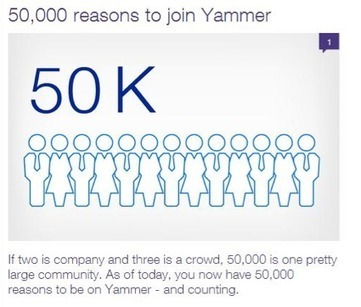







![#1 Most Important Leadership Trait Worldwide [New Research] | Public Relations & Social Marketing Insight | Scoop.it](https://img.scoop.it/vgzkn_Ad1P5VA3FyUoDE2zl72eJkfbmt4t8yenImKBVvK0kTmF0xjctABnaLJIm9)
![What Makes a Team Truly Great? 9 Defining Traits [Infographic] | Public Relations & Social Marketing Insight | Scoop.it](https://img.scoop.it/V8CzC9nPiFIXGJJ6yXtWozl72eJkfbmt4t8yenImKBVvK0kTmF0xjctABnaLJIm9)



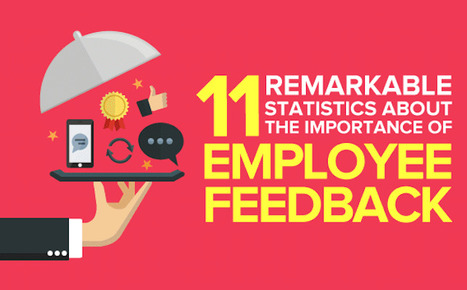
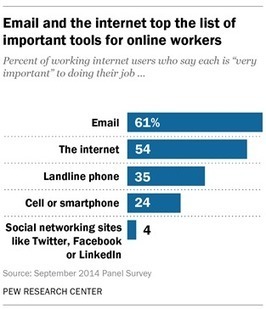

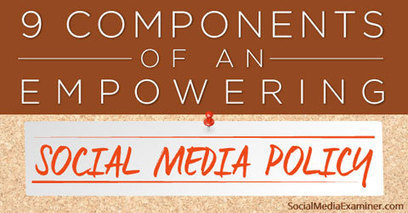

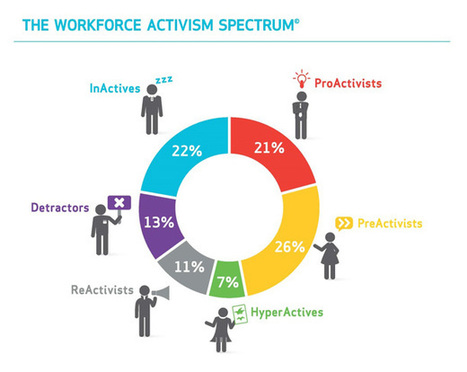






Consider the critical risk-reward of employee social media strategies. Not as simple as suggested as many marketing and PR fails show.